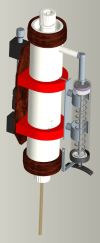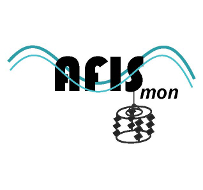Background

Modern molecular techniques now allow for monitoring of microbial activities and functions in the environment through the analysis of genes and expressed genes (transcripts, represented by messenger RNA [mRNA]) contained in natural microbial assemblages (metagenomes and metatranscriptomes, respectively). Unfortunately, transcripts can degrade in less than 30 seconds and stability varies greatly between transcripts (Andersson et al. 2006). It is known that their abundance patterns detected in nature, especially from hypoxic or deep water habitats, are a challenge to sample because they are subject to considerable modification simply due to sampling procedures. In consequence, we developed the Automatic Flow Injection Sampler (AFIS [Feike et al. 2012]). The AFIS samples and fixes water directly in the environment, and by this instantaneously conserves the gene expression profile in situ. This allows for a reliable evaluation of microbially driven processes based on metatranscriptomics. AFIS is a ship-dependent sampling and conservation system designed for common CTD rosettes. However, for a high resolution and standardized monitoring of temporal variations ship-independent autonomous event and/or time triggered in situ fixation instruments are essential.
In this project, we will develop the established AFIS instrument further into an autonomous in situ fixation multisampler for monitoring microbially driven biogeochemical processes (AFISsys[tem]) in Baltic Sea water. This system will be able to take, fix, and store water samples independently off-shore, and this at high temporal resolution. AFISsys will conserve sensitive mRNA directly in the environment, for later metatranscriptome analysis in the laboratory. The operational AFISsys can be installed on permanent ocean observatories or moving buyos, from which the fixed samples can be recovered.
References
Andersson A., Lundgren M., Eriksson S., Rosenlund M., Bernander R. & Nilsson P. (2006). Global analysis of mRNA stability in the archaeon Sulfolobus. Genome Biol., 7, R99.
Feike J., Jürgens K., Hollibaugh J.T., Krüger S., Jost G. & Labrenz M. (2012). Measuring unbiased metatranscriptomics in suboxic waters of the central Baltic Sea using a new in situ fixation system. ISME J., 6, 461-470.
Further suggestions
Wurzbacher C., Salka I. & Grossart H.-P. (2012). Environmental actinorhodopsin expression revealed by a new in situ filtration and fixation sampler. Environ. Microbiol. Rep., 4, 491-497.
Scholin C., Doucette G., Jensen S., Roman B., Pargett D., Marin III R., Preston C., Jones W., Feldman J., Everlove C., Harris A., Alvarado N., Massion E., Birch J., Greenfield D., Vrijenhoek R., Mikulski C. & Jones K. (2009). Remote detection of marine microbes, small invertebrates, harmful algae, and biotoxins using the Environmental Sample Processor (ESP). Oceanography, 22, 158-167.

